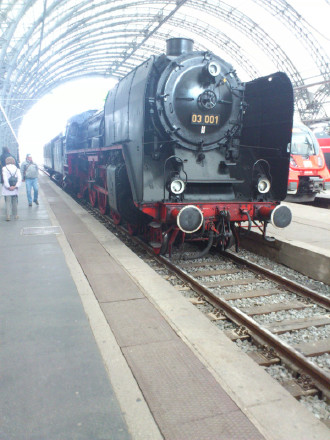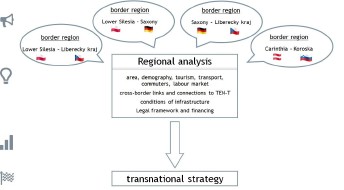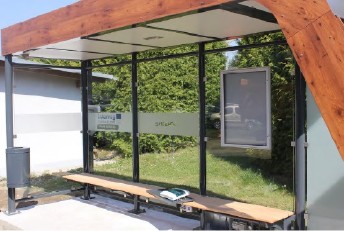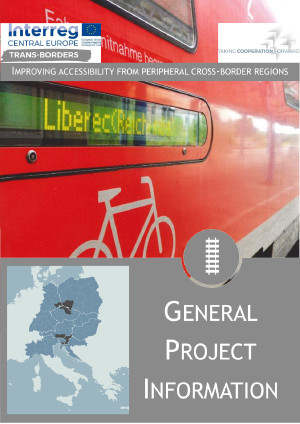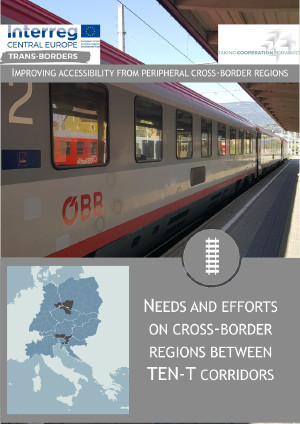Improving accessibility from peripheral cross-border areas, where public transport connections are still underdeveloped, to the TEN-T core network poses a challenge in central Europe. TRANS-BORDERS aimed to improve railway links and alternatively bus lines in the peripheral regions. The project was based on three pillars: better governance, joint planning and operational implementation. Working on these pillars, TRANS-BORDERS aims to make peripheral areas in border regions more accessible by improving public transport links and connecting them to closest TEN-T nodes abroad.
In order to establish and extend these links it is important to strengthen professional inter-ministerial and inter-departmental cooperation and ensure smooth decision and policy making processes between cross-border regions. To enhance cohesion and cooperation, TRANS-BORDERS developed guidelines and a joint action plan regarding an establishment of encompassing steering committee for cross-border regions in peripheral regions far from the TEN-T network.
The two project areas of TRANS-BORDERS show weak local, regional and transnational accessibility, especially with regard to the accessibility of the nearest TEN-T nodes. This problem has multiple causes. TRANS-BORDERS contributed to the solution of this problem and addressed the issues. The bases for action in the project were four coordinated regional action plans, which led to one transnational strategy. Guided by this strategy, six pilot actions were initiated, implemented, and sustained in the regions. The creation of new climate-friendly transport offers in cross-border transport is the visible side of the project results. Invisible, but not less important, the project succeeded in networking the different stakeholders and policymakers (63 in total) and activating them to joint actions and measures.
30.11.2020
News
Closing of the project
After three and a half years of intensive work, research and cooperation our project came to a successful end. We hope that our work can lay the foundation for the improvement of cross-border transport systems throughout Europe. We will also build on our findings and further develop our pilots and insights. In case of any questions feel free to get in contact with our lead partner (contact down the page).

Project in numbers
Strategy
Action plans
Pilots
Investment
Working Structure
Three new bus lines were established between Zgorzelec and Görlitz, Zittau and Bogatynia and on the line Zittau-Bogatynia- Frydlant-Swieradow Zdroj. In the Czech border region of the border triangle, railway stations were redesigned so that access becomes easy and barrier-free. Between Carinthia and Koroška, new modern services for weekenders and commuters have been established, which means a new cross-border bus and a rail connection. Partner regions also collaborated on a transnational level, for example in the field of mobility node design as well as for the elaboration of financing and contracting models for cross-border transport. Investments in the form of the design of mobility nodes were made in Lavamünd.
The most important goals that have been achieved are of a non-investment nature. Through the implementation and realization of the four Regional Action Plans, processes have been set in motions that have enabled improved governance. The improved institutional cooperation at the ministerial level in the tri-border region Germany, Czech Republic and Poland as well as between the ministries in Austria and Slovenia meant progress in the implementation of the pilots, which will have an impact beyond the project period. The Transnational Strategy developed in the partnership is based on these Regional Action Plans and could be successfully adopted and implemented in the institutions as well as in national, regional, and local strategies and policies, so that the basic concern of the project, the better accessibility of peripheral border regions, was perceived and will also be perceived in the future.
Project Outputs, deliverables and results
Season Bus line Lavamünd Maribor
project Documents & Publications
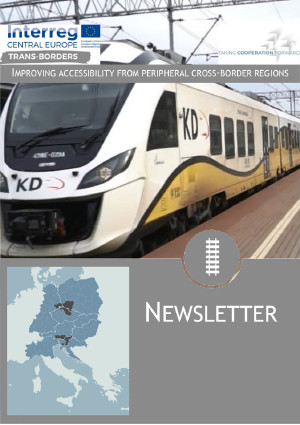
Newsletter
- Newsletter volume 7 - november 2020 (pdf 0.5 MB)
- Newsletter volume 1 - November 2017 (pdf 0.5 MB)
- Newsletter volume 2 - May 2018 (pdf 0.3 MB)
- Newsletter volume 3 - November 2018 (pdf 0.4 MB)
- Newsletter volume 4 - May 2019 (pdf 1.1 MB)
- Newsletter volume 6 - may 2020 (pdf 0.6 MB)
- Newsletter volume 5 - November 2019 (pdf 0.7 MB)

Cooperating on cross-border passenger transport for better connections to TEN-T (T2)
- Pilot implementation Railway line Dresden-Wroclaw (pdf 3.4 MB)
- Plannings for Railway connection of Liberec Region - Görlitz_Zgorzelec (pdf 1.5 MB)
- Plannings for improved passenger transport to TEN-T nodes - between Liberec and Turnov (pdf 3.8 MB)
- Plannings for cross-border regions Görlitz_Zgorcelecz (pdf 1.1 MB)
- Regional action plan for improving cross-border PT Carinthia – Koroska (pdf 1.3 MB)
- Regional action plan for improving cross-border PT Saxony - Lower Silesia (pdf 1.0 MB)
- Regional action plan for improving cross-border PT Saxony - Liberec region (pdf 1.0 MB)
- Regional action plan for improving cross-border PT Liberec region - Lower Siliesia (pdf 2.2 MB)
- Final report Handbook CZ-DE-PL (pdf 2.1 MB)
- Final report Handbook DE-EN-SLO (pdf 2.1 MB)
- Financing model Carinthia-Koroska (pdf 0.6 MB)
- Pilot implementation - Bleiburg_Pliberk- Prevalje (pdf 0.9 MB)
- Government structures Saxony-Lower Silesia (pdf 0.6 MB)
- Pilot implementation of improved passenger transport to TEN-T nodes-Season Bus line Lavamünd-Maribor (pdf 1.6 MB)
- Financing model Saxony-Lower Silesia (pdf 2.0 MB)
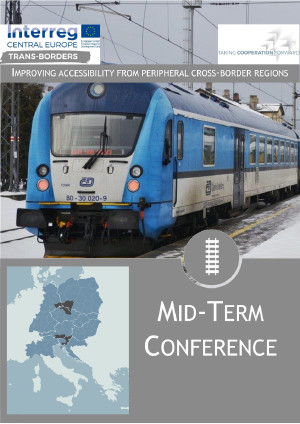
Mid-Term Conference
- Action plan for the border region of Carinthia and Koroška (pdf 2.9 MB)
- Action plans for the border triangle Lower Silesia, Liberec region and Saxony (pdf 3.4 MB)
- Passenger rail connection Saxony - Lower Silesia (pdf 1.2 MB)
- TRITIA – A Three-country European Grouping of Territorial Cooperation (EGTC) (pdf 3.0 MB)
- Peripheral Access – Interreg Central Europe project (pdf 2.8 MB)
- Eurekarail – A Three-country project DE-NL-B on cross-border rail transport (pdf 5.1 MB)
- Missink links – A new European study about the situation on cross-border railways (pdf 5.2 MB)
- General information TRANS-BORDERS (pdf 0.9 MB)
Project Partners
TRANS-BORDERS has 9 partners from 5 countries and 6 associated partners.
Facts & Figures
Partners
Associated Partners
Countries
Budget in Million
Project Duration
06/2017
11/2020
